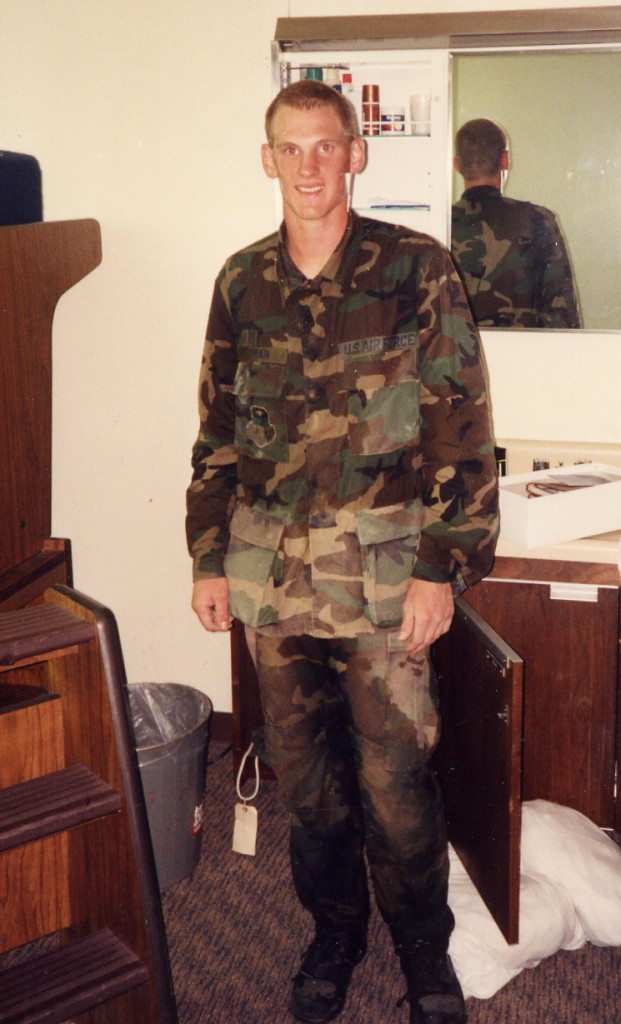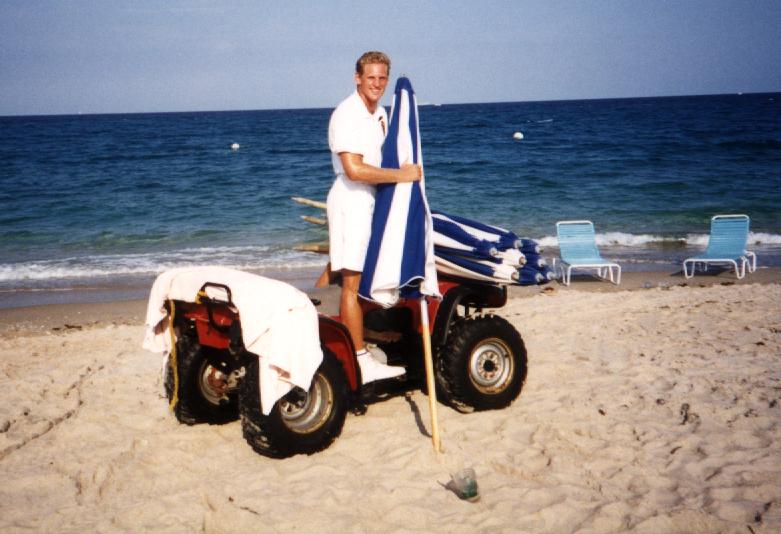
How I got unfat (or at least started the journey)
The goal of course is to look jacked like Dr Feigenbaum here, and not just skinny.
You look pretty good. What do you eat? — Jerry Seinfeld
Just skip to the end please
I lost 14 pounds on the Atkins diet and by intermittent fasting. Then I found flexible dieting and am now doing “if it fits your macros” (IIFYM) combined with strength training. I’m combining flexible dieting with intermittent fasting–by eating twice a day, the meals I do eat get to be bigger. No cardio beyond walking or recreational activities is required. (Editorial note: this post may sometimes seem a bit schizophrenic because I started writing it while I was doing Atkins/Keto but by the time I finished it I was no longer doing keto.)
The journey to fatness.
It’s embarrassing to admit it, but the past few years have been a journey toward obesity. I was a scrawny kid who could eat anything. I graduated high school at a whopping 145 pounds. Then I went to the Air Force Academy and went down to a downright skeletal 134 pounds in Basic Training.
By the time I graduated college I was 170 pounds. But then I got a job as a lifeguard and beach attendant at the Breaker’s Hotel and Resort in Palm Beach, FL. That took me down to 165 pounds of tanned, bleach-blonde muscle despite eating probably 5,000 calories a day. Unfortunately, my high school weight and beach experience reinforced the notion that I could eat whatever I want and still be thin.
…and then I got old. Everyone always said, “wait till you’re 40,” but it happened to me at 24. I was able to stave off the weight gain by sheer physical activity—capoeira, karate, tai chi. ballroom dancing, Latin dancing. And then I got married and got a real job. It’s a lot harder to maintain that kind of lifestyle when you’re working full time and have a wife who wants to spend time with you. I tipped the scales at a 185 pounds when I got married at 26. A few years later I was 200.
To Insanity and.. Beyond!
Obviously, I need to start exercising again, but we had moved, and I didn’t know where to find a good dojo and dance studio, so I turned to Beach Body. I started with Slim in 6 but all the lunges were too hard on my knees, so I switched to Power 90 (the much easier precursor to P90x). From the, the Power Half Hour, and eventually P90X itself. All of them work to some degree, but they take progressively more and more time. P90X requires a whopping hour and half a day. Six days a week. It’s just not fun. Then I tried the aptly named Insanity. I lasted three sessions. It really is insane, and not in a good way. The human body is not meant to work in that particular way. Anyway, my first son, Logan was born, and after 3 sleepless, exerciseless months. I figured I needed to workout again. That’s when I found Rushfit, designed for and marketed by MMA fighter George “Rush” St Pierre. I really liked the full body nature of the workouts and the relatively short time (30 minutes plus a 10 minute warm up). It was nice to have kick boxing moves performed by actual martial artists…but my knees didn’t like strain, so I had to take it easy on certain days. Still I was in overall good shape, although still over 200 pounds. (Nothing scarier than an overweight, in shape, martial artist right?)
And then. And then my second son, Corban was born, and the next thing you know I had only worked out twice in the last two years. One workout a year isn’t too bad, I think. Eventually, I tipped the pounds at a whopping 212 pounds!!!
What’s love got to do with it?
Unfortunately, none of it really works, because exercising raises your appetite, and it’s too hard on a middle aging body to work out 6 days a week, and who has the time when you have two kids? The key, of course, is changing your diet. For years I had bought into the silliness that reducing carbohydrates and especially sugars will reduce insulin, which in turn makes it easier to lose weight. I had believed this for years, but didn’t want to do it, because…because I love carbs, and I especially love sugar. I love Coca Cola, and Cherry Pepsi, and cookies, and bread, and donuts, and cake (which is really just an icing delivery device). In fact, I told my nursing students that I was living proof that the health belief model was false. I believed in low carb diets, but I didn’t want to follow one…until I wanted family photos with the kids without me looking like a blimp.
My brother had lost 15 pounds or so in a month following the Atkins diet (a kind of low carb diet), and what he was doing seemed pretty reasonable, so I figured I’d try it…in a couple weeks.
How to lose 14 pounds in three weeks
Well, I started off by cheating. I got the flu. A bad flu. With stomach symptoms. To stop the symptoms I stopped eating. Between the starvation and the fever, I lost 6 pounds in 5 days. It would be a shame to waste that head start, so I went Atkins too. The basic Atkins diet is eat high protein, high fat meals, with low carbohydrates. The Atkins diet has “phases” where you vary the amount of carbohydrate. Basically, in the “induction phase” you try to eat less than 20 grams of carbohydrate per day. That turns out to be a lot harder than you might think. The key is that during induction you eat as much as you want as long as it’s low carb. This turns out to be a great diet for carnivores. You typically stay in induction for 2-4 weeks. After induction, you ease up on the carb restrictions but still stay low carb. Once you make your weight goal, then you raise the carbs up to the point you start to gain weight again, and then reduce back to a stable weight. That final stage very much resembles a Paleo diet.
I also started using “intermittent fasting,” which is a essentially, trying to do all your eating in an 8 hour window, and then not eating (fasting) for 16 hours. For me, that means I try to be done eating around 8pm and then I don’t eat until around 11 or 12 the next day. Since beginning using the low carb, intermittent fasting diet, I have lost 14 pounds in 3 weeks (including the 6 pounds from the flu). I’m rarely “starving” although I do get quite hungry around 5pm. Most of the days I only eat two meals (just because of convenience), although I do eat some snacks. An important point with intermittent fasting is that you can choose your fasting window. If you work out first thing in the morning, you probably don’t want to wait until noon to eat. If you sleep in, you could delay until 4pm. And feel free to break the routine for social life. The key is to choose something that works for your schedule and your life.
What the heck do you eat? That must be boring!
Low carb dieting does take some imagination, but really, you can have quite a lot. Over the next few days, I’ll post some recipes, but here are some sample meals:
- Cheeseburger (no bun)
- Pulled pork with low carb barbeque sauce
- Arugula steak salad
- Chicken Alfredo over a bed of arugula
- Eggs and bacon
- Egg pucks (crustless mini quiches)
- Baked chicken and spinach salad
- Almond crusted tilapia (or any fish for that matter)
- Pesto grilled salmon
And some sample snacks:
- Beef jerky (or better yet, Biltong)
- Uncured Turkey and a slice of cheese (with mustard and pickle if you like)
- Parmesan Cheese Whisps (1 carb per serving; currently available at Costco)
- Small handful of almonds (preferably flavored with something other than sugar)
- Avocado chocolate pudding
- Dark chocolate (do yourself a favor and buy some good stuff; life’s too short to eat crappy chocolate)
Generally speaking you can have as much meat, eggs, butter, bacon, and leafy green vegetables as you like. You can eat some fruits and vegetables that are high carbohydrate in moderation. For example a six inch section of cucumber has 6 carbs. That’s more than a quarter of your allotment during induction phase, but if you only eat a two inch section, that’s only 2 carbs.
Isn’t Atkins really hard to follow?
Quite honestly, Atkins is a very easy diet once you get the right mindset. You eat as much as you want, as long as it’s not carbohydrate. It does take some effort, because we are surrounded by delicious smelling carbohydrates. The last thing I eat every day are four large bittersweet chocolate chips; about 5 carbs. The most important thing is not to hang around food you shouldn’t be eating when you’re hungry.
Unfortunately, the weightloss can be temporary. It’s the total caloric intake that determines weight loss/gain. Sometimes your appetite adjusts to the diet and you simply start eating more, or maybe you discover how to cheat with “paleo desserts.” Other issues with the diet include that it can be constipating and can cause leg cramps. Both of these issues can be dealt with by taking magnesium and potassium supplements. You’ll also find that you need to drink a lot more water while on the Atkins diet.
But isn’t fat bad for you?
There isn’t enough space in this post to go over all the ways this myth is wrong. Let’s just say, “no.” Fat is not bad for you. Now, there is a caveat, because today’s mass produced meat is not necessarily the healthiest, and sick animals often store toxins in their fat. So, whenever possible, you should try to eat pastured meat from local farms. For further reading, I’d suggest Dr Ravnskov’s Fat and Cholesterol are Good For You.
Insulin is the key, but what’s the question?
I had bought the lie that the real enemy is insulin. In theory, high carbohydrate meals cause an increased insulin response to prevent high blood sugar. Insulin tells your liver and muscle cells to pull in sugar and make glycogen out of it. When your liver runs out of room to store glycogen, it starts making triglycerides from fatty acid (fat transport molecules). Then it sends the triglycerides out through your blood where the insulin to tells fat cells to pull in them in and store them as body fat. Meanwhile, the surge of insulin spurs a fall in blood sugar levels triggering a hunger reaction within a few hours, causing the cycle to repeat itself over and over.
Reducing carbs may help reduce the magnitude of insulin spikes and have an impact on appetite, but the key to weightloss is eating fewer calories, and that’s the beauty of a low carb diet. When you cut out all those glorious carbs…baked potatoes, cookies, French Fries, donuts…you also cut out an enormous amount of fats too, resulting in a gigantic calorie reduction.
How long are planning on keeping this madness up?
Actually, I’ve already stopped. My goal is 175 pounds, but Atkins, although doable, isn’t always that fun. And carbs aren’t the real issue anyway. The Flexible Dieting approach is much more in line with my long term goals and overall eating philosophy. I’ve decided to go with a fairly aggressive deficit which is designed to help you lose between a pound and a half to two pounds of fat per week while maintaining or even building muscle.
The Flexible Dieting approach is a bit more complicated than Atkins, because you have to calculate your calorie deficit to achieve your desired weight, and then try to “hit your macros” which means eat the appropriate ratio of protein, fat, and carbohydrates each day (although in reality it’s fairly lenient as long as you eat enough protein to maintain your muscle).
I’m also using intermittent fasting, which I like, and you can eat fun things like dessert every now and then as long as you adjust the rest of your diet. The basic plan is to push your first meal of the day as far back as possible and then eat two meals, one large and one small. The nice thing about the eating this way, is your large meal can be a feast! Even Chipotle! (Although you’re supposed to order triple chicken to get enough protein.) Once you’ve tracked everything for a week or two, you get the hang of things, and you don’t have to track as much.
But you’re not fat
I don’t know why people say this. They’re obviously 1) blind, 2) lying, 3) trying to minimize/rationalize their own fat inertia. Admitting you have a problem is the first step to recovery. I’m fat…not because of lack of exercise…but because of my love of sugar. I really think that in my case I was actually addicted to large amounts of carbohydrate (particularly sugar). So I think going Atkins for a little while was a necessary step for me, because it allowed me to truly break the habit. But eating low carb all the time can lead to low leptin levels (a hormone ) that in turn makes it harder to lose weight.
Are you allowed to work out while fasting?
Yup. I had originally planned on mostly following the workout plan espoused by Martin Berkhan of LeanGains.com. It’s essentially using heavy weights in compound movements. The core movements are dead lifts, chin ups, squats, and bench press. You try to work out three times a week. You do three sets of each exercise. You try to do 2 – 3 sets with very heavy weight on the first set (~5 Reps Max). Then drop the drop the weight 10% and try to do 5-7 reps for the next two sets. Martin calls this a reverse pyramid. That’s it. No “cardio” other than recreational (e.g., riding a bike for fun, walking the dog, playing ultimate frisbee, etc.). For those of you addicted to cardio, do yourself a favor and read Mark Sisson’s The Case Against Chronic Cardio.
Martin’s website is worth reading, although he hasn’t written their lately, his philosophy makes a lot of sense, and you certainly can’t argue with the results. (See video below. Warning: You might want to turn down your volume unless you really like Swedish heavy metal.)
But Martin hadn’t updated his website in over 4 years, so I found other gurus online. Some of them have hundreds of free videos. In another video I’ll list some of the ones I like and who I would recommend avoiding.
That’s it for it now
I’ll keep you posted over the next few weeks as to my progress.




Recent Comments